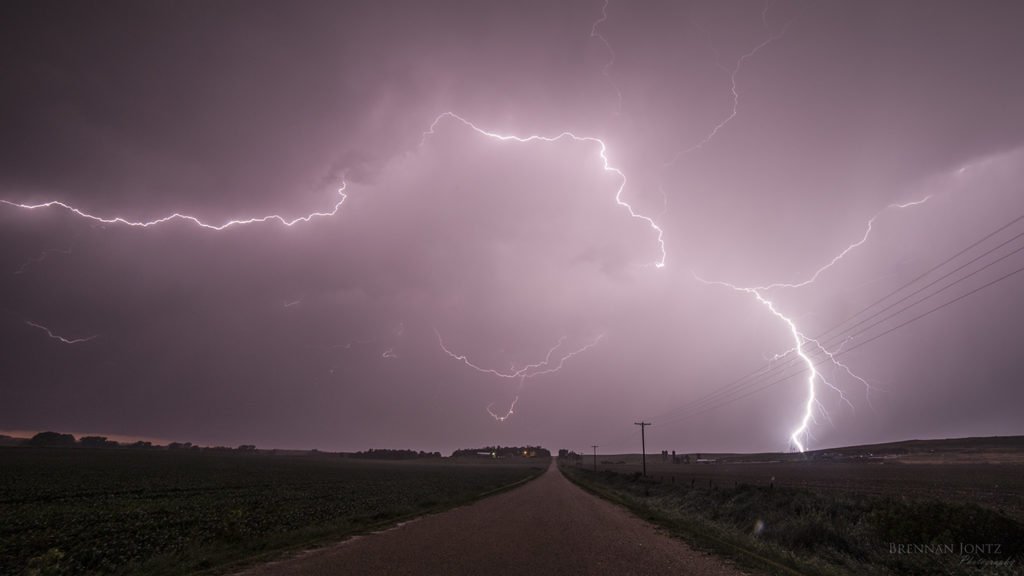What Causes Thunder & Lightning?

Nature never ceases to amaze us with its grandeur and power, and among its most captivating displays are lightning and thunder. These awe-inspiring phenomena have captured the imagination of humanity for millennia, inspiring myths, legends, and scientific inquiry. In this article, we delve into the captivating world of lightning and thunder, exploring their causes, characteristics, and the fascinating statistics that surround them.
Lightning: Nature’s Electrifying Display
Lightning, with its dazzling bolts streaking across the sky, is one of nature’s most electrifying spectacles. But what exactly is lightning, and how does it occur?
What is Lightning?
At its core, lightning is a discharge of electricity in the atmosphere. It typically occurs during thunderstorms when electrical imbalances build up between clouds or between a cloud and the ground. This buildup of electrical charge results from the collision of ice particles within clouds, creating a separation of positive and negative charges.
What Causes Lightning?
The exact mechanisms behind the formation of lightning are complex, but essentially, it involves the separation of positive and negative charges within a cloud. As the charge separation increases, it creates an electric field strong enough to overcome the resistance of the air, leading to a sudden discharge of electricity in the form of lightning.
Lightning Statistics:
Frequency: Lightning is more common than you might think. Worldwide, there are an estimated 8 million lightning strikes every day.
Speed: Lightning travels at incredible speeds, reaching up to 220,000 miles per second.
Temperature: The temperature of a lightning bolt can soar to around 30,000 degrees Celsius (54,000 degrees Fahrenheit), making it hotter than the surface of the sun.
Variety: Lightning comes in various forms, including cloud-to-ground, cloud-to-cloud, and even within clouds themselves.
Location: While lightning can occur anywhere, certain regions are more prone to frequent strikes. For example, the central United States experiences a phenomenon known as “Tornado Alley,” where lightning activity is particularly intense.
Thunder: The Roar of the Storm
Accompanying the dazzling display of lightning is the ominous rumble of thunder. But what causes this dramatic auditory phenomenon, and how does it relate to lightning?
What is Thunder?
Thunder is the sound produced by the rapid expansion and contraction of air surrounding a lightning bolt. When lightning strikes, it superheats the air along its path, causing it to expand rapidly. This sudden expansion creates a shockwave, which we perceive as the booming sound of thunder.
What Causes Thunder?
Thunder is the acoustic effect of lightning. As mentioned earlier, the intense heat generated by the lightning bolt causes the surrounding air to expand rapidly. This sudden expansion creates shockwaves, which produce the loud rumbling sound we know as thunder. The distance of the lightning from our location affects the time gap between seeing the flash and hearing the accompanying thunder. By counting the seconds between the flash and the thunder, we can estimate how far away the lightning occurred.
Thunder Statistics:
Speed of Sound: Thunder travels at the speed of sound, which is approximately 343 meters per second (or 1,125 feet per second) at sea level.
Distance Estimation: By counting the seconds between seeing lightning and hearing thunder, it’s possible to estimate the distance of a lightning strike. Each second corresponds to roughly 343 meters (or 1,125 feet) of distance.
Variety of Sounds: Thunder can vary greatly in intensity and duration, depending on factors such as the distance from the lightning strike and atmospheric conditions.
Multiple Rumbles: Sometimes, a single lightning bolt can produce multiple rumbles of thunder as sound waves bounce off obstacles and travel different paths to the observer.
Supersonic Thunder: In rare cases, when lightning occurs very close to an observer, the resulting thunder can exceed the speed of sound, creating a sonic boom.
Lightning and thunder are captivating natural phenomena that continue to inspire wonder and fascination. From the electrifying beauty of lightning bolts to the rumbling echoes of thunder, these atmospheric displays remind us of the awe-inspiring power of nature. As we marvel at their splendor, let us also remember to respect the forces at play and take necessary precautions to stay safe during thunderstorms.